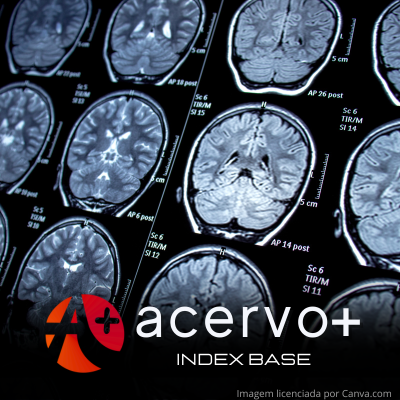Perspectivas atualizadas sobre epilepsia
##plugins.themes.bootstrap3.article.main##
Resumo
Objetivo: Descrever de maneira otimizada as perspectivas acerca da epilepsia, a fim de elucidar suas principais etiologias, assim como sua fisiopatologia, com o intuito de elencar suas principais formas de diagnóstico e tratamento. Revisão bibliográfica: A epilepsia detém individualidades, o que está diretamente relacionado com a síndrome base a ela associada, assim como a faixa etária de sua incidência. Tudo isso, refletindo de mesma intensidade na sua abordagem diagnostica e terapêutica. Tudo isso, culminando em esforços do coletivo dos profissionais da saúde em elucidar melhores métodos diagnósticos e de tratamento. Considerações finais: O entendimento, portanto, das singularidades da doença epiléptica se mostra de grande valia para um exímio manejo dos pacientes dela portadores, a fim de aprimorar os métodos diagnósticos e terapêuticos, proporcionando aos pacientes uma melhor qualidade de vida e minimizando os impactos da doença. A pesquisa incansável e a colaboração entre profissionais da saúde abrem caminho para um futuro promissor para os pacientes portadores da epilepsia.
##plugins.themes.bootstrap3.article.details##
Copyright © | Todos os direitos reservados.
A revista detém os direitos autorais exclusivos de publicação deste artigo nos termos da lei 9610/98.
Reprodução parcial
É livre o uso de partes do texto, figuras e questionário do artigo, sendo obrigatória a citação dos autores e revista.
Reprodução total
É expressamente proibida, devendo ser autorizada pela revista.
Referências
2. BEGHI E. The Epidemiology of Epilepsy. Neuroepidemiology., 2020; 54(2): 185-191.
3. BELOUSOVA ED, et al. Novye mezhdunarodnye klassifikatsii épilepsiĭ i épilepticheskikh pristupov Mezhdunarodnoĭ ligi po bor'be s épilepsieĭ (2017) [New classifications of epilepsies and seizure types created by the International League against Epilepsy (2017)]. Zh Nevrol Psikhiatr Im S S Korsakova., 2017; 117(7): 99-106.
4. BRIGO F, et al. Ethosuximide, sodium valproate or lamotrigine for absence seizures in children and adolescents. Cochrane Database Syst Rev., 2021; 21;1(1): CD003032.
5. BRODIE MJ. Modern management of juvenile myoclonic epilepsy. Expert Rev Neurother., 2016; 16(6): 681-8.
6. BUCKLEY AW, HOLMES GL. Epilepsy and Autism. Cold Spring Harb Perspect Med., 2016; 6(4): a022749.
7. CAMPANILLE V, et al. La epilepsia mioclónica juvenil y las disfunciones neurocognitivas y ejecutivas asociadas [Juvenile myoclonic epilepsy and associated neurocognitive and executive dysfunctions]. Medicina (B Aires)., 2021; 81(6): 965-971.
8. CAPOVILLA G, et al. Epileptic encephalopathy as models of system epilepsy. Epilepsia., 2013; 54(8): 34-7.
9. ENGLOT DJ, et al. Epilepsy and brain tumors. Handb Clin Neurol., 2016; 134:267-85.
10. ERTÜRK ÇETIN Ö, et al. Epilepsy-related brain tumors. Seizure., 2017; 44:93-97.
11. FALLAH A, et al. Epilepsy surgery related to pediatric brain tumors: Miami Children's Hospital experience. J Neurosurg Pediatr., 2015; 16(6):675-80.
12. GALOVIC M, et al. Seizures and Epilepsy After Stroke: Epidemiology, Biomarkers and Management. Drugs Aging., 2021; 38(4):285-299.
13. KESSLER SK, MCGINNIS E. A Practical Guide to Treatment of Childhood Absence Epilepsy. Paediatr Drugs., 2019; 21(1):15-24.
14. KOUTROUMANIDIS M, et al. The role of EEG in the diagnosis and classification of the epilepsy syndromes: a tool for clinical practice by the ILAE Neurophysiology Task Force (Part 1). Epileptic Disord., 2017; 19(3):233-298.
15. LÖSCHER W, et al. Drug Resistance in Epilepsy: Clinical Impact, Potential Mechanisms, and New Innovative Treatment Options. Pharmacol Rev., 2020; 72(3):606-638.
16. MANFORD M. Recent advances in epilepsy. J Neurol., 2017; 264(8):1811-1824.
17. MARTÍNEZ-FERRÁNDEZ C, et al. Long-term prognosis of childhood absence epilepsy. Neurologia (Engl Ed)., 2019; 34(4):224-228.
18. NOLAN D, FINK J. Genetics of epilepsy. Handb Clin Neurol., 2018;148:467-491.
19. PATEL DC, et al. Neuron-glia interactions in the pathophysiology of epilepsy. Nat Rev Neurosci., 2019; 20(5):282-297.
20. PERUCCA P, PERUCCA E. Identifying mutations in epilepsy genes: Impact on treatment selection. Epilepsy Res., 2019; 152:18-30.
21. RUGG-GUNN F, et al. Epilepsy surgery. Pract Neurol., 2020; 20(1):4-14.
22. SCHEFFER IE, et al. ILAE classification of the epilepsies: Position paper of the ILAE Commission for Classification and Terminology. Epilepsia., 2017; 58(4):512-521.
23. SIDHU MK, et al. Neuroimaging in epilepsy. Curr Opin Neurol., 2018; 31(4):371-378.
24. SPECCHIO N, CURATOLO P. Developmental and epileptic encephalopathies: what we do and do not know. Brain., 2021; 144(1):32-43.
25. STEINHOFF BJ, STAACK AM. Is there a place for surgical treatment of nonpharmacoresistant epilepsy? Epilepsy Behav., 2019; 91:4-8.
26. SYMONDS JD, et al. Advances in epilepsy gene discovery and implications for epilepsy diagnosis and treatment. Curr Opin Neurol., 2017; 30(2):193-199.
27. TREIMAN DM. GABAergic mechanisms in epilepsy. Epilepsia., 2001; 42(3):8-12.
28. ZÖLLNER JP, et al. Seizures and epilepsy in patients with ischaemic stroke. Neurol. Res., 2021; 3:63.

